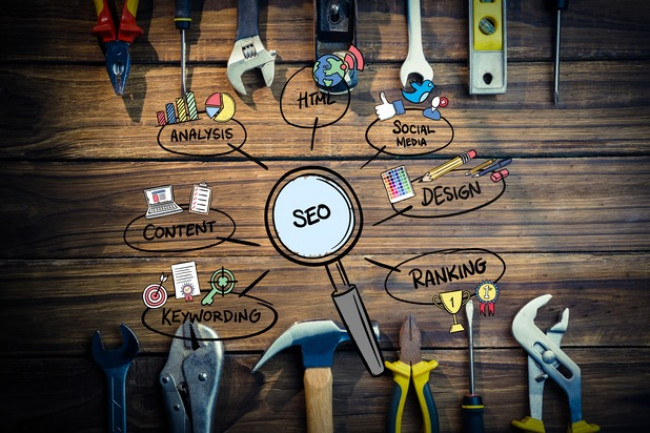As technology advances, manufacturing businesses are tasked with managing more complicated operations than ever before. However, it's becoming increasingly easier for them to handle the workload thanks to Optical Character Recognition (OCR) technology. Learn how this cutting-edge technology is revolutionizing the manufacturing industry and how you can benefit from it!

Introduction to OCR Technology and Its Benefits
OCR technology is revolutionising the manufacturing industry by helping to streamline production processes and improve accuracy and efficiency. By automating the conversion of text on images into machine-readable data, OCR enables factories to speed up their assembly lines, reduce human error and improve quality control. The benefits of OCR services are particularly evident in the automotive and electronics industries, where production lines are often highly automated.
In the automotive industry, OCR is used to read vehicle identification numbers (VINs) which are stamped onto car frames during production. This information is then used to track individual vehicles throughout the manufacturing process and ensure that they are built according to specifications. In the electronics industry, OCR is used to read component codes on circuit boards so that they can be correctly assembled. This helps reduce waste, improve yields, and ensure that products meet customer requirements.
OCR technology is also being used more broadly in the manufacturing sector to track inventory, manage supplier relationships and even monitor employee performance. The possibilities for further applications of OCR are limited only by our imagination – making it a technology that will transform the manufacturing landscape in the future.
How OCR Technology Streamlines Manufacturing Processes
Optical character recognition (OCR) technology is revolutionizing the manufacturing industry by automating many of the tasks that have traditionally been done manually. OCR technology can be used to scan and read documents, barcodes, and other text-based information quickly and accurately. This information can then be used to track inventory, create digital records, and automate production processes.
OCR technology is helping manufacturers reduce costs and improve efficiency. In the past, manufacturing processes were often reliant on manual data entry, which was time-consuming and prone to error. OCR technology enables manufacturers to automate many of these tasks, which can save considerable time and money. Additionally, OCR data can be easily integrated into existing systems and workflows, further streamlining operations.
Manufacturers adopting OCR technology can expect a wide range of benefits. By automating tedious and time-consuming tasks, OCR can help improve efficiency and accuracy while reducing costs. Additionally, OCR data can be easily integrated into existing systems and workflows for even greater efficiency gains. Implementing OCR technology can help manufacturers stay competitive in today’s fast-paced business environment.
Examples of Manufacturing Companies Using OCR Technology
There are many well-known companies that have implemented OCR technology in their manufacturing processes. Some of these companies include General Motors, Ford, Chrysler, Honda, Toyota, and Nissan. These companies use OCR technology to automate the process of reading and understanding blueprints and other engineering drawings. This allows them to speed up the manufacturing process and improve accuracy.
Other well-known companies that use OCR technology include Philips Electronics, Siemens AG, Bosch, and Samsung. These companies use OCR technology to automatically read and interpret electronic components such as integrated circuits and printed circuit boards. This helps them to quickly identify errors and correct them before they become costly problems.
The Positive Impact of OCR Technology on the Industry
Optical Character Recognition, or OCR technology, is currently positively impacting the manufacturing industry by automating various tasks that were traditionally done manually. This not only saves time and money but also helps to improve accuracy and efficiency in the workplace. Some of the specific ways in which OCR technology is benefiting the manufacturing industry include:
1) Automating tasks that were traditionally done manually: OCR technology is helping to automate various tasks in the manufacturing industry that were previously done manually. This includes tasks such as data entry, document management, and product identification. By automating these tasks, manufacturers are able to save time and money while also improving accuracy and efficiency.
2)Improving communication and collaboration: OCR technology is also helping to improve communication and collaboration among workers in the manufacturing industry. By providing employees with instant access to documents and information, OCR technology is making it easier for workers to communicate and collaborate with each other. This improved communication can lead to better decision-making and more efficient workflows.
3) Enhancing quality control: OCR technology can also be used to enhance quality control in the manufacturing process. By automatically scanning products for defects, OCR technology can help identify problems quickly so that they can be fixed before the products are shipped out. This can ultimately help improve customer satisfaction rates.
Challenges Faced in the Adoption of OCR Technology
The challenges faced in the adoption of OCR technology are many and varied. One of the most significant challenges is the cost of implementing and deploying an OCR system. While the benefits of OCR technology are clear, the upfront investment required to deploy a system can be prohibitive for some companies. Additionally, OCR systems require a certain level of technical expertise to operate and maintain, which can another barrier to adoption.
Another challenge companies looking to adopt OCR technology face is finding software that meets their specific needs. Off-the-shelf solutions may not have all the features or functionality that a company requires, which can make implementation more difficult. Furthermore, customizing existing software to work with an OCR system can be time-consuming and expensive.
Finally, one of the biggest challenges associated with OCR technology is getting accurate results. Even with the most sophisticated system, there is always the potential for error when converting images to text. This can lead to inaccuracies in data entry and analysis, which can ultimately impact a company's bottom line.
Conclusion
As you can see, OCR technology is transforming the manufacturing industry in a variety of exciting ways. It is helping to reduce manpower costs, boost production efficiency, optimize processes, and improve safety standards across the board. With all these advantages, it’s obvious why an increasing number of companies are incorporating this innovative technology into their operations. By investing in OCR technology now, manufacturers can stay ahead of the curve and ensure that they remain competitive in today’s market.
















